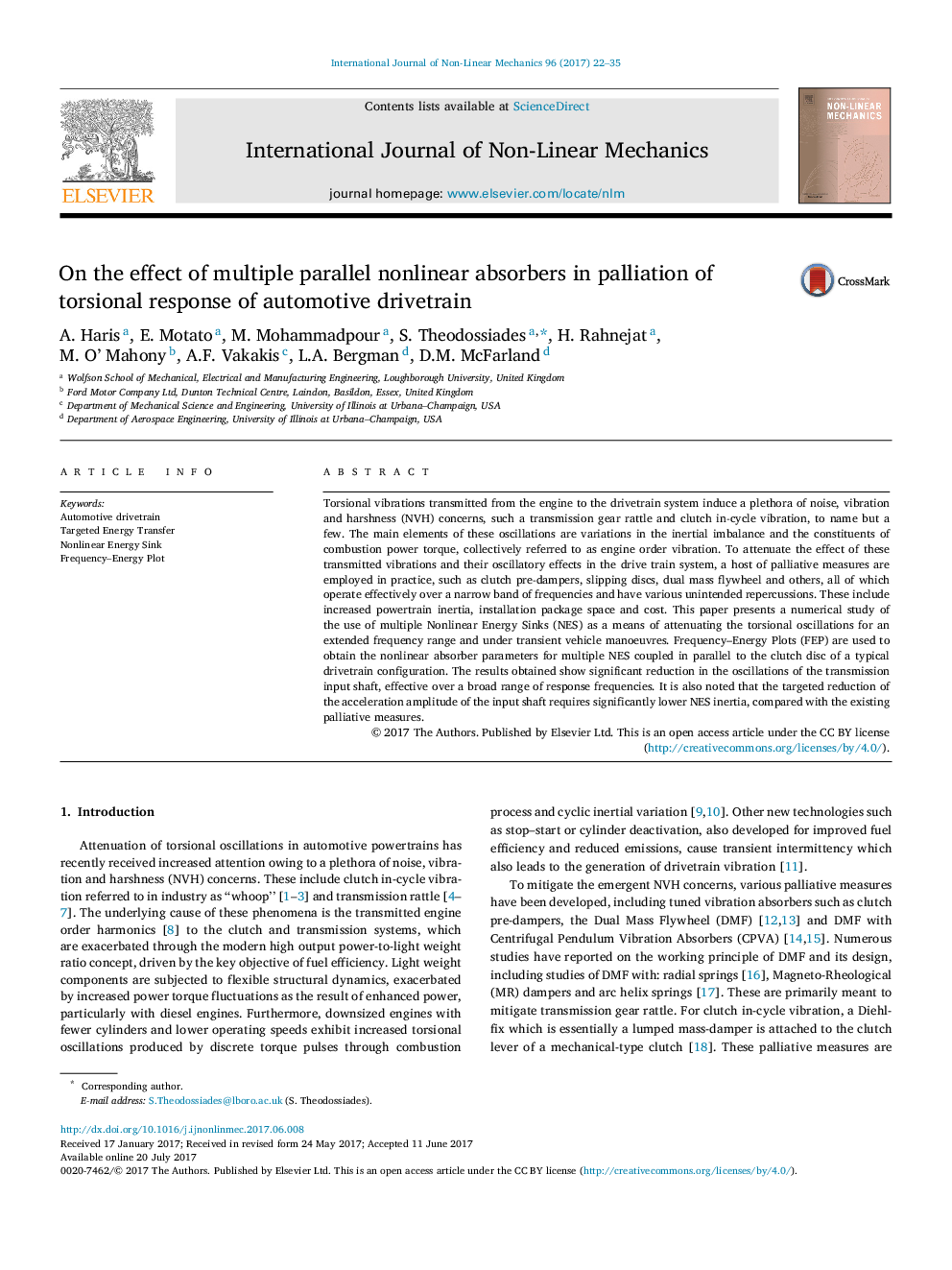| Article ID | Journal | Published Year | Pages | File Type |
|---|---|---|---|---|
| 5016415 | International Journal of Non-Linear Mechanics | 2017 | 14 Pages |
â¢An automotive drivetrain model is validated in frequency and time domains against experimental data.â¢The effect of NES absorbers on reducing the drivetrain's torsional vibrations is studied.â¢Single and multiple NESs are coupled to the drivetrain model.â¢A methodology using frequency-energy plots for selecting the characteristics of the NES is described.
Torsional vibrations transmitted from the engine to the drivetrain system induce a plethora of noise, vibration and harshness (NVH) concerns, such a transmission gear rattle and clutch in-cycle vibration, to name but a few. The main elements of these oscillations are variations in the inertial imbalance and the constituents of combustion power torque, collectively referred to as engine order vibration. To attenuate the effect of these transmitted vibrations and their oscillatory effects in the drive train system, a host of palliative measures are employed in practice, such as clutch pre-dampers, slipping discs, dual mass flywheel and others, all of which operate effectively over a narrow band of frequencies and have various unintended repercussions. These include increased powertrain inertia, installation package space and cost. This paper presents a numerical study of the use of multiple Nonlinear Energy Sinks (NES) as a means of attenuating the torsional oscillations for an extended frequency range and under transient vehicle manoeuvres. Frequency-Energy Plots (FEP) are used to obtain the nonlinear absorber parameters for multiple NES coupled in parallel to the clutch disc of a typical drivetrain configuration. The results obtained show significant reduction in the oscillations of the transmission input shaft, effective over a broad range of response frequencies. It is also noted that the targeted reduction of the acceleration amplitude of the input shaft requires significantly lower NES inertia, compared with the existing palliative measures.
